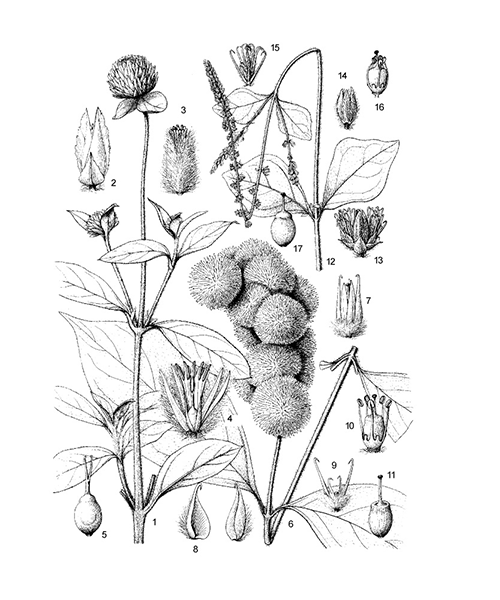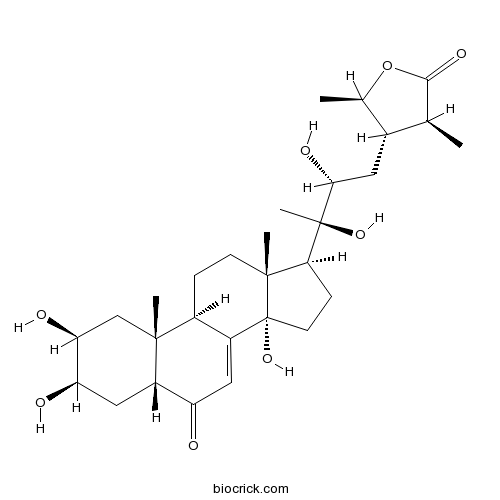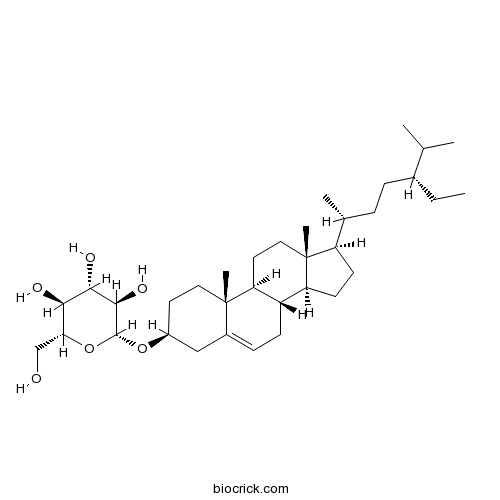Cyathula officinalis
Cyathula officinalis
1. The products in our compound library are selected from thousands of unique natural products; 2. It has the characteristics of diverse structure, diverse sources and wide coverage of activities; 3. Provide information on the activity of products from major journals, patents and research reports around the world, providing theoretical direction and research basis for further research and screening; 4. Free combination according to the type, source, target and disease of natural product; 5. The compound powder is placed in a covered tube and then discharged into a 10 x 10 cryostat; 6. Transport in ice pack or dry ice pack. Please store it at -20 °C as soon as possible after receiving the product, and use it as soon as possible after opening.

Natural products/compounds from Cyathula officinalis
- Cat.No. Product Name CAS Number COA
-
BCN5416
Cyasterone17086-76-9
Instructions

-
BCN2754
Precyasterone27335-85-9
Instructions

-
BCN5531
Daucosterol474-58-8
Instructions

-
BCN4969
Fructose57-48-7
Instructions

[Allele-specific PCR to identification of Achyranthis Bidentatae Radix and Cyathulae Radix formula granules].[Pubmed: 29676092]
To establish a robust and accuracy molecular method to identify Achyranthis Bidentatae Radix and Cyathulae Radix formula granules. ITS sequences of Achyranthes bidentata and Cyathula officinalis were aligned, specific SNPs (single nucleotide polymorphisms) were excavated, specific primers were designed and allele-specific PCR method was established. The genomic DNA was successfully extracted from the herbal medicine and its formula granules by using an improved CTAB (cetyltrimethyl ammonium bromide) method and then performed PCR with the designed primers. The 187 bp specific band could be amplified only in the presentation of C. officinalis and its granules when use of C. officinalis specific primers, whereas the 162 bp band could be amplified only in the presentation of A. bidentata and its granules when use of A. bidentata specific primers. This method was also successfully applied in the identification of commercial formula granules.
[Predictive distribution and planting GAP of Cyathula officinalis in China based on 3S technology and MaxEnt modelling].[Pubmed: 29318841]
Research on predictive distribution and planting GAP of Cyathula officinalis in China is helpful to provide scientific basis for its protection and planting popularization. According to the data in 63 distribution sites and 49 ecological variables, using MaxEnt ecological niche model and 3S technology, we performed a quantitative analysis of suitable distribution and planting GAP of C. officinalis in China. Our results show that: ① the area of suitable distribution of C. officinalis is about 634 385.80 km² in total, and mainly in Northeastern and Southeastern Sichuan, Northern and Southeastern Yunnan, Western and Southwestern Guizhou, Southwestern and Northeastern Chongqing, Southwestern Shaanxi, Southeastern Gansu, Western Guangxi, Southeastern Tibet. ② The main ecological factors determining the potential distribution are precipitation, altitude, minimum temperature of coldest month, soil type, monthly mean temperature. ③ The planting GAP region are mainly in Guangyuan, Mianyang, Ya'an, Leshan, Liangshan, Panzhihua of Sichuan province, Hanzhong of Shaanxi province, Dali, Nujiang, Chuxiong, Baoshan, Qujing, Wenshan of Yunnan province, southwestern autonomous prefecture in Guizhou province. The results are of great significance for realizing the growth environment, predicting the potential distribution and promoting planting popularization for C. officinalis.
Triterpenoid saponins from the roots of Cyathula officinalis and their inhibitory effects on nitric oxide production.[Pubmed: 28629537]
The present study was designed to investigate the chemical constituents of the roots of Cyathula officinalis. Compounds were isolated by silica gel, Sephadex LH-20, ODS column chromatography, and preparative HPLC. Their structures were determined on the basis of 1D and 2D NMR techniques, mass spectrometry, and chemical methods. One new oleanane-type triterpenoid saponin, 28-O-[α-L-rhamnopyranosyl-(1→3)-β-D-glucuronopyranosyl-(1→3)-β-D-glucopyranosyl] hederagenin (1), was isolated from the roots of Cyathula officinalis. The anti-inflammatory activities of the isolates were evaluated for their inhibitory effects against LPS-induced nitric oxide (NO) production in RAW 264.7 macrophages cells. Compounds 2, 4, and 6 exhibited moderate anti-inflammatory activities.
[Cloning, subcellular lacalization and expression analysis of chloroplast-targeted Obg gene in Cyathula officinalis].[Pubmed: 28905595]
According to ObgC gene sequences from Cyathula officinalis genomic data, the specific primers were designed, and a full-length CoObgC cDNA (2 226 bp) was obtained by polymerase chain reaction (PCR) and rapid amplification of cDNA ends (RACE) methord. Sequence alignment showed that CoObgC gene contained a 1 818 bp open reading frame (ORF) encoding 605 amino acids. Sequence analysis predicted that molecular weight of CoObgC protein was about 66.39 kDa, the academic isoelectric point was 5.35, and the protein was stable protein. Then multiple sequence alignment was applied to construct phylogenetic tree. The real-time fluorescence quantification PCR (RT-qPCR) demonstrated that a high expression level in leaf, followed by root and flower, the low transcription was in stem. The recombinant vector pCABIA2300-CoObgC was constructed and introduced into tobacco epidermal cells by agrobacterium-mediated transformation, green fluorescence was tested and targeted to chloroplast under a laser scanning confocal microscope. These findings will be helpful to lay a foundation for studying the structure and function of CoObgC gene, and elucidating C. officinalis molecular biology experiment.
[Effect of moisture content on vigor of Cyathula officinalis seeds and its anti-aging mechanism analysis].[Pubmed: 28879735]
Effects of nine different moisture contents on vigor of Cyathula officinalis seeds and its anti-aging mechanism were studied by artificial accelerated aging through high temperature and wet. The research results showedthat seed vigor were generally decreased after artificial aging; in general, seed vigor and its anti-aging ability are relatively stronger within the scope of 6.55%-4.78% moisture content, the increase range of seed conductivity, peroxidase activity, malondialdehyde content,and reduce amplitude of activityof dehydrogenase , superoxide dismutaseare alllower as well. And when the moisture content reduced to 5.77%, all of the germination tests index of the non-aged seeds are the highest, and the activity of peroxidase the lowest,conductivity of leaching solution relatively low, activity of dehydrogenase and superoxide dismutase the highest,and catalase activityrelatively high.Therefore, in the low temperature germplasm preservation of C. officinalis seeds, the seed moisture content should be controlled close to the range of (5.70±1)% to keep higher vigor and anti-aging ability.


